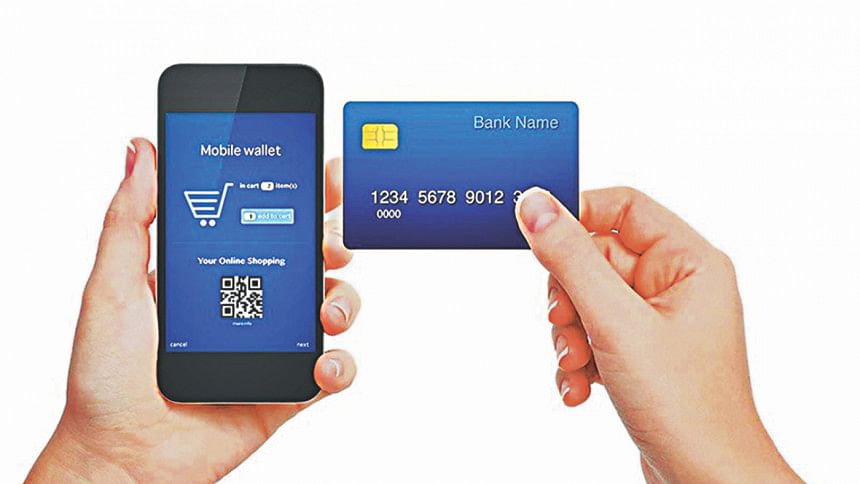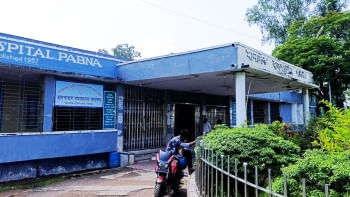Towards a cash-lite Bangladesh

Cash is king. That age-old saying is up for a rethink today. The world has since transitioned from monarchies (with kings and queens) to democracies (with Prime Ministers and Presidents). Payment instruments are also transitioning – from paper money and coins to their digital counterparts that no longer require physical cash. How far has Bangladesh come in that journey towards a cash-lite society?
Let's revisit some basic concepts before answering that question. Any monetary transaction requires at least two parties, namely, a payer and a payee. The system through which the exchange of value happens between the payer and payee is the payment system. Value is exchanged using payment instruments like cash, cheque, card, mobile money etc. The central bank, commercial banks, and payment service providers (such as mobile money operators)are some of the key actors in this domain. Integration of all these parties to facilitate the transaction between payer and payee forms the payment ecosystem of a country. If the instrument used for the transaction is in digital form, such as cards or mobile money, it constitutes a digital transaction and contributes towards a cash-lite ecosystem. The payment ecosystem of an economy is usually never static; shifts in technology and cultural factors drive the economic and political gears that evolve the payment systems.
In 2016, pi STRATEGY conducted a detailed study to understand all forms of payments that take place in Bangladesh and estimate what percentage of those payments are through digital means and what percentage are through cash. This landmark study, funded by the United Nations, was launched by the Honorable Finance Minister at an event organized by the Prime Minister's Office. The study found that government entities, businesses, individuals and donors together make an estimated 4.4 billion payments per year in Bangladesh, which translates to approximately USD368 billion annually, or about USD1 billion per day. 6.24% of the total volume of transactions and 11.83% of the monetary value in the economy flow through digital channels. (In countries such as Canada and the Netherlands, over 50% of the payments are through digital channels.) In terms of monetary value, an estimated 68.97% of the payments originating from the government are made using electronic means, while only 3.29% of the payments from businesses and 2.61% of the payments from individuals are done electronically.
The study made a few recommendations the country could adopt to accelerate the transition to a cash-lite society. These included fully implementing and integrating the NID with payment systems, improving the regulatory environment to encourage greater competition, and enhancing interoperability to create an unrestricted flow of money among users across multiple channels.
In the two years that passed, commendable progress has already been made, especially with respect to NID integration and interoperability. Based on its June 2018 quick re-assessment, pi STRATEGY estimates that the money flowing through electronic means in Bangladesh has increased from 11.83% to nearly 18%. This is a significant rise in a short time. The two biggest contributors to this increase are greater adoption of mobile financial services and the government's efforts in using electronic payments in social safety net programs. pi STRATEGY forecasts indicate that Bangladesh will reach the 33% mark by its 50th birthday, and cross the 50% threshold by 2025, if the current trends in payment digitization continue.
Moving to a cash-lite payment ecosystem offers many benefits. Cash is expensive and it carries a higher degree of risk. Conversely, digital money is more cost effective and less risky. Research also finds that digital payment ecosystems can be a driver for business innovation: bundling electronic payments information and software creates opportunities for businesses to streamline and automate processes relating to procurement, distribution, inventory management, and payment collections; entrepreneurs might also have greater access to credit through credit scoring mechanisms based on transactional histories.
Digital payment ecosystems can also support government's efforts in enhancing efficiencies and fighting corruption: since government is generally the largest payer (of salaries, pensions, and social safety net payments) and collector (e.g. taxes) in each country, it stands to gain substantially from a cheap, transparent electronic payment platform with adequate traceability and accountability of payments. A May 2018 pi STRATEGY study looked closely at the potential savings that could be achieved by the Government of Bangladesh through social safety net payment digitization. The study found that digitizing all social safety net payments could lead to approximately USD150 million in savings per year. This money could be used, for example, to support several million additional beneficiaries.
Despite its recent efforts in digital payments, Bangladesh still has a long way to go. Since Bangladesh has limited resources, we need to critically examine which paths are likely to lead to the highest returns on investments towards our goals. If our goals are to move as fast as possible towards becoming a cash-lite society while at the same time achieve our financial inclusion targets, the choice is clear: we will need to invest heavily in mobile financial services (MFS). MFS is cheaper to deploy than other digital channels (ATMs, cards, etc.). It already has far more payment points: the total number of ATMs and POS terminals in Bangladesh is collectively less than 50,000, whereas, there are more than 500,000 MFS agent points. MFS is far more widely adopted: the total number of debit and credit card holders is about 10 million after 20 years of cards presence in Bangladesh, whereas the total number of registered MFS accounts is over 60 million after 7 years of MFS presence. And perhaps most importantly, MFS has already demonstrated its ability to reach the poorer unbanked populations and therefore make significant impact on improving financial inclusion. The 10 million people with debit or credit cards today aren't exactly poor or financially excluded; in fact, they are among the top 6% of Bangladesh's socioeconomic class.
Having said that, there are many pieces of the MFS ecosystem puzzle that still need to be solved. Greater interoperability, healthier competitive environment, increased merchant payments, enhanced wallet adoption are but a few examples. Bangladesh should focus its energy and efforts in collaboratively solving these pieces of the puzzle to facilitate a faster transition towards a cash-lite society.
Pial Islam is Managing Partner at pi STRATEGY, a management consulting firm that specializes in helping clients transform ambiguity into opportunity. He can be reached at [email protected]

 For all latest news, follow The Daily Star's Google News channel.
For all latest news, follow The Daily Star's Google News channel. 



Comments